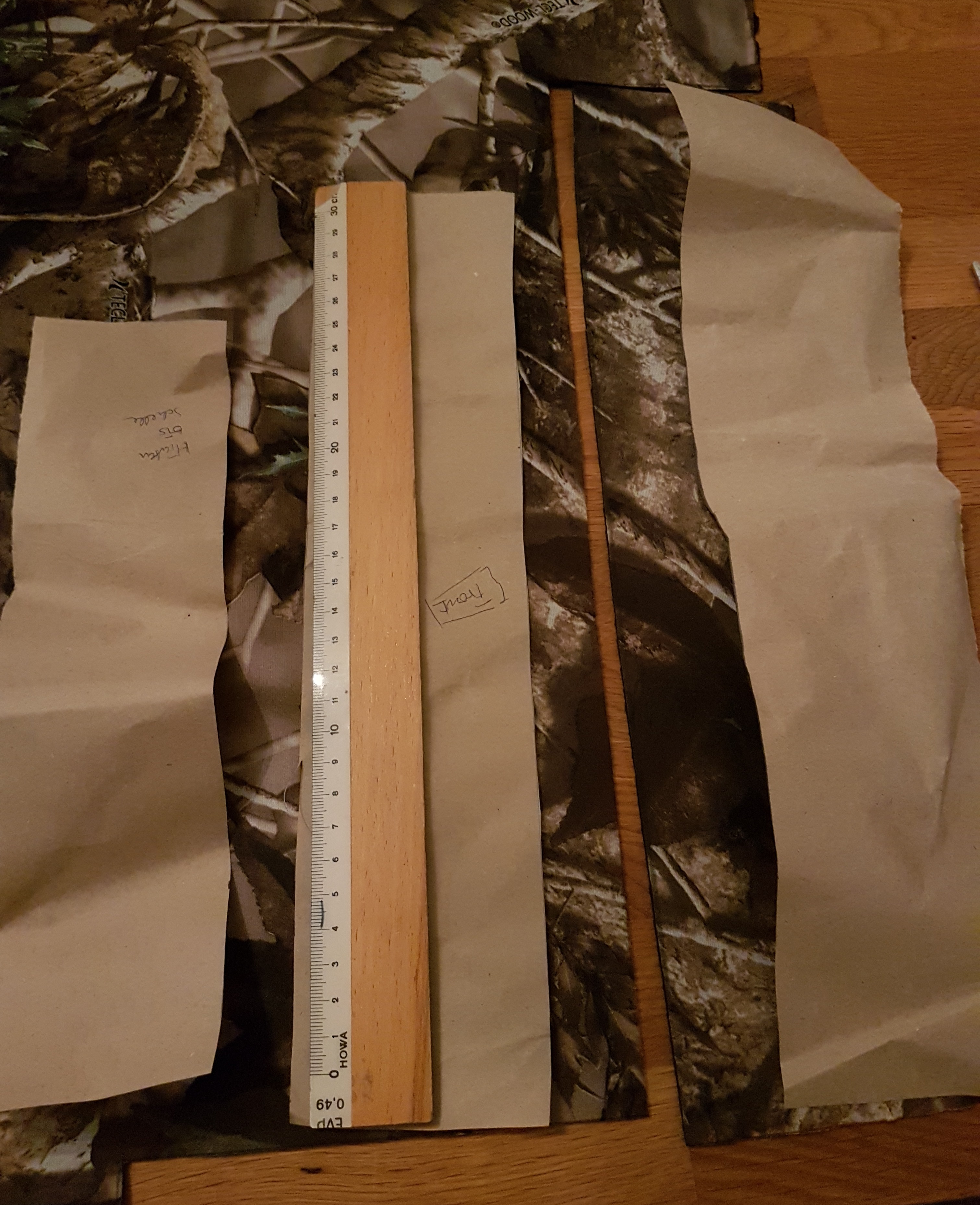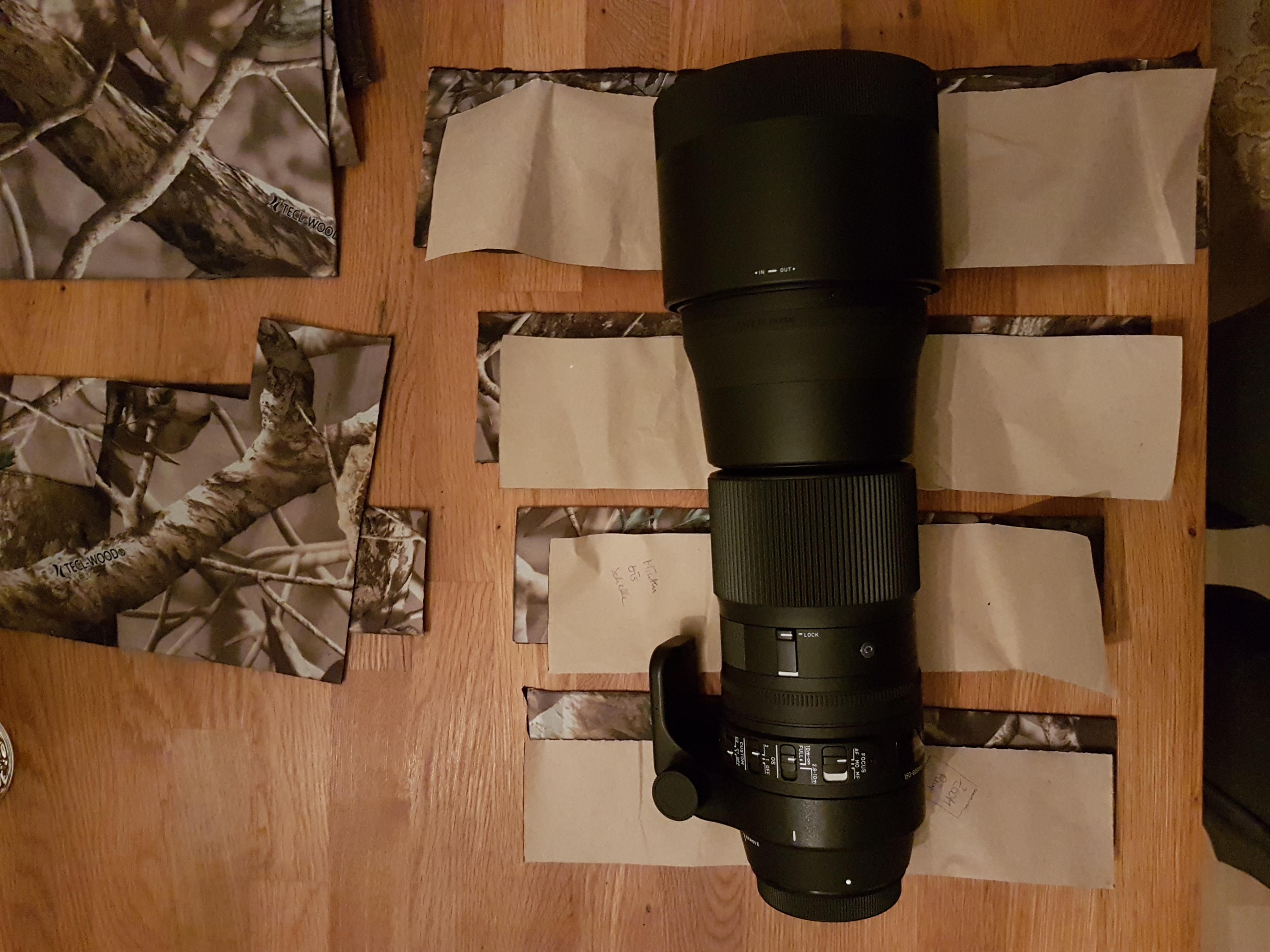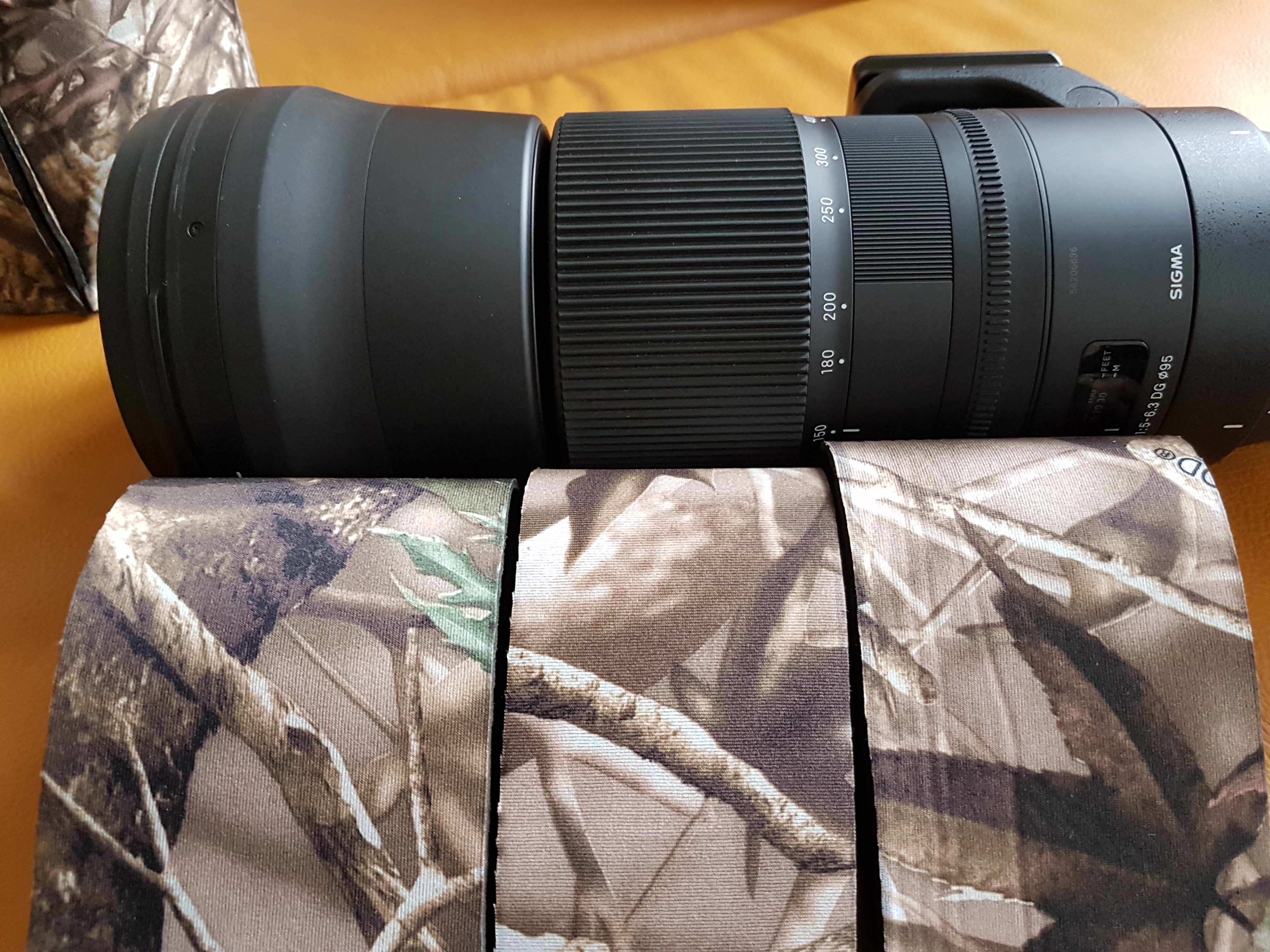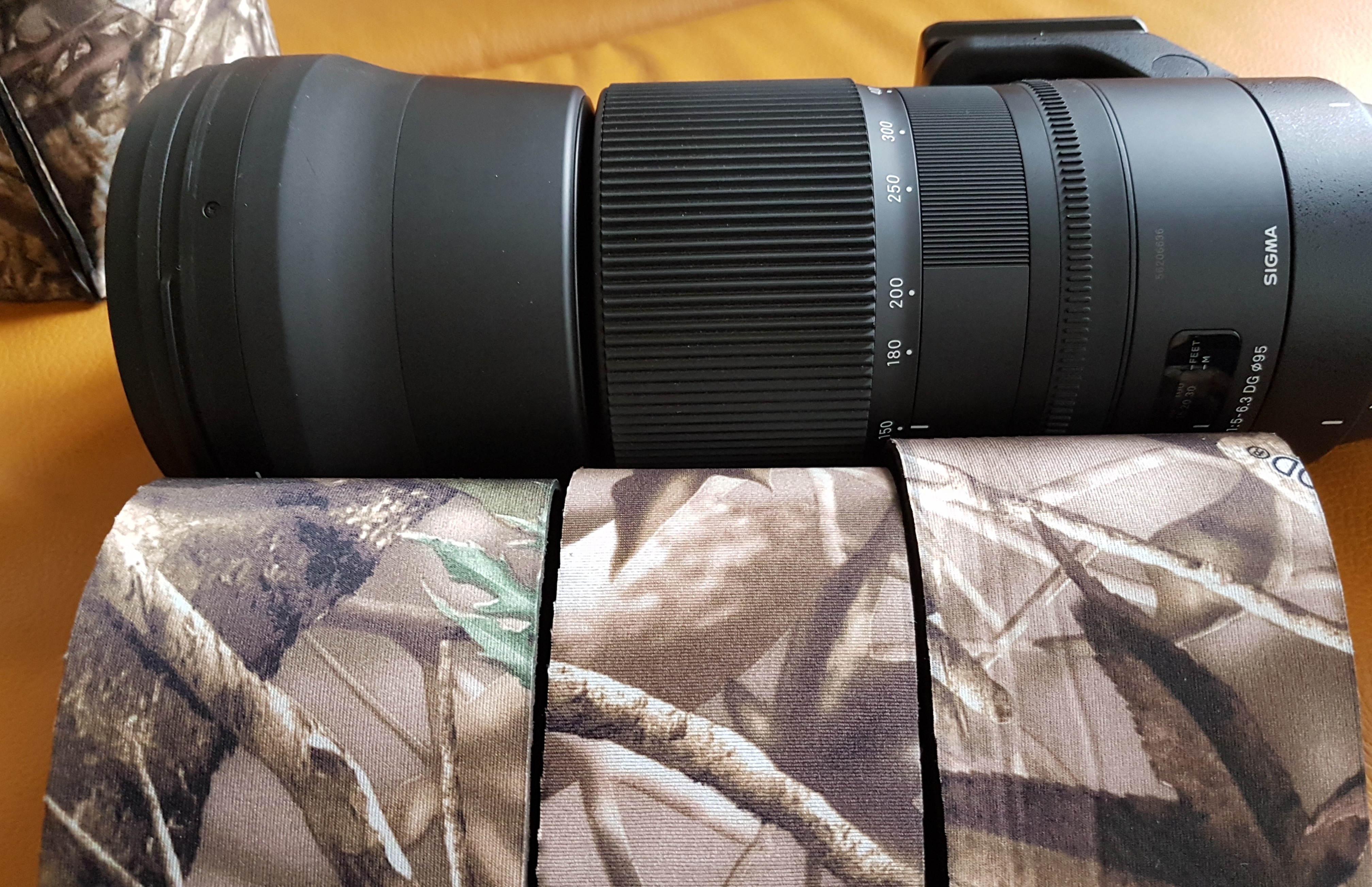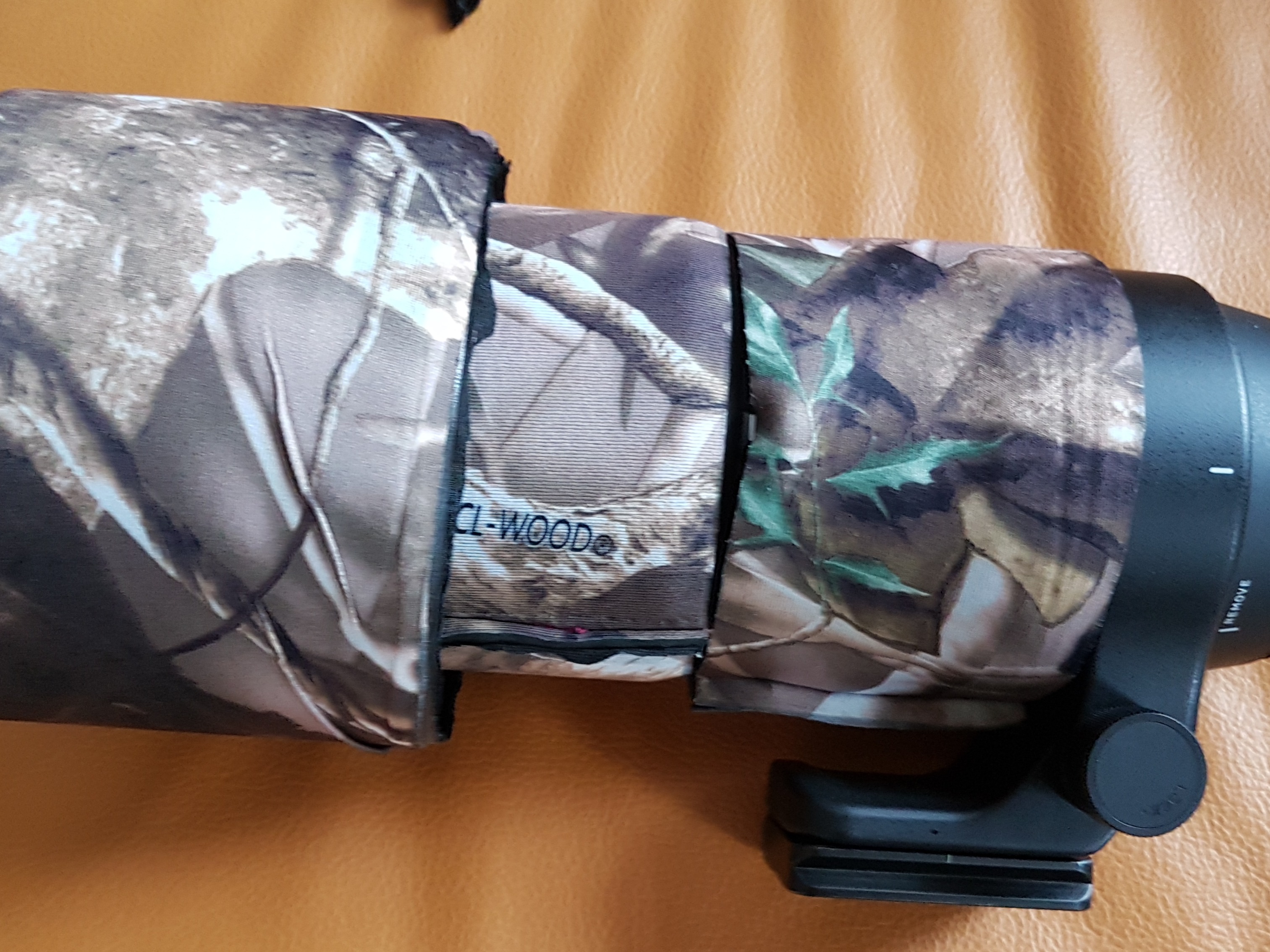
....
DIY Lens cover
Lens covers are often used to protect camera lenses from external influences such as dust, scratches and moisture. Camouflage optics are particularly appreciated by us nature photographers to be less conspicuous in the wild. These covers are usually made of lightweight and durable materials such as neoprene or nylon.
In wildlife photography the covers should be designed with a camouflage pattern that blends well with natural environments such as forests, grasslands or mountains. This helps to minimize the attention of shy animals. Especially with white-colored lenses such as from Canon or Sony.
The lens cover should provide protection from dust, dirt, moisture and scratches. This is especially important when shooting in harsh environments or different weather conditions.
The covers can also serve to insulate the lens to compensate for temperature fluctuations if the material is neoprene. This can help prevent condensation on the lens. Finally the lens cover shall be easy to apply and remove. It should have cut-outs to facilitate access to specific lens settings like autofocus or image stabilizer.
